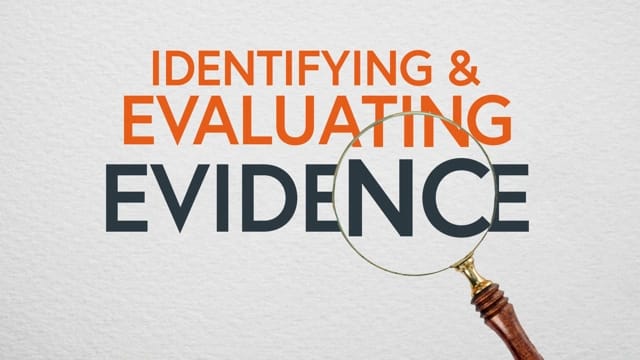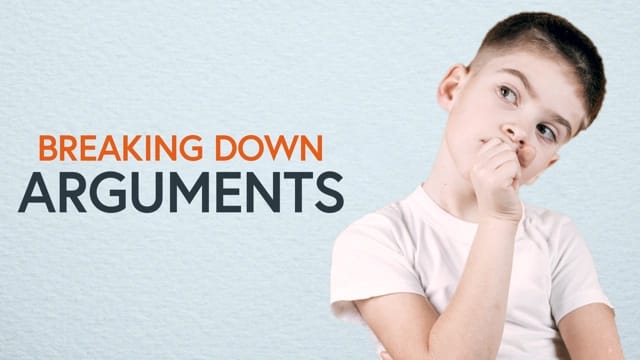9 Incredible Earth Day activities for students
In this guide
- 1) Read a book
- 2) Litter pick
- 3) Recycle
- 4) Go on a nature walk (primary)
- 5) Make bird feeders (primary)
- 6) Watch an environmental awareness movie (primary)
- 7) Build a school garden (secondary school)
- 8) Debate an environmental issue (secondary school)
- 9) Watch an environmental awareness movie or documentary (secondary school)
Every year on the 22nd of April, Earth Day is celebrated by many all over the world. It is a day to take time to appreciate the Earth and take action to conserve and protect this planet. This special day has been observed for 53 years.
I believe Earth Day can be an excellent opportunity for any year group to discuss, participate and work together to honour the planet we live on. From Reception to GCSE, students can be informed and get involved in some way.
Click here for some excellent resources that could get your class started on Earth Day-related lessons.
There are MANY ways to educate students on Earth Day and its importance, but here are just a few suggested activities for the primary and secondary levels.
1) Read a book
A great place to start with teaching and discussing Earth Day with your students is through a good book. No matter the year group, students can really benefit from this activity.
Reading a book to introduce a new concept is an excellent and fun way to help front-load background knowledge. It also provides opportunities for discussions, drawings, and compare/contrast, and helps students connect with their community and the world.
Whenever I would introduce a new unit or lesson, I always tried to find a book that we could read to enrich the learning. This sparks interest and may trigger prior knowledge.
There are many books about Earth Day. I have compiled a list of books that I love, and I know kids enjoy. I have separated it by younger and older students.

Books for primary students:
- The Great Kapok Tree by Lynne Cherry
- The Pout-Pout Fish Cleans Up the Ocean by Deborah Diesen
- It’s Earth Day! by Mercer Mayer
- Why Should I Recycle? By Jen Green
- Earth Day Everyday by Lisa Bullard
- It’s Earth Day, Cookie Monster! by Mary Lindeen
- Earth Day by Emma Carlson Berne
- I Am Earth: An Earth Day Book by Rebecca and James McDonald
- We Are Water Protectors by Carole Lindstrom
- Earth Day by Erika S Manley
- Fancy Nancy: Every Day is Earth Day by Jane O’Connor
- Celebrating Earth Day by Barbara Linde

Books for secondary school students:
- Saving Earth: Climate Change and the Fight for Our Future by Olugbemisola Rhuda-Perkovich
- Consider the Octopus by Nora Raleigh Baskin
- Hoot by Carl Hiassen
- Flush by Carl Hiassen
- The Great Unexpected by Sharon Creech
- Girls Who Green the World by Diana Kapp
- Living Green in the City: 50 Actions to Make Your Surroundings Greener by Ophelie Damble’
- The First Rule of Climate Club by Carrie Firestone
- Two Degrees by Alan Gratz
- Haven Jacobs Saves the Planet by Barbara Dee
2) Litter pick
A great way to get students involved and help them see the impact they’re making is through picking up rubbish. It could be as simple as having students walk around the school and the playground.
This could be done in larger groups or in pairs. Have students walk around with bin bags, picking up anything they can find. Perhaps give them a goal, for example: everyone needs to find five pieces.
You could make a game of it. The group that picks up the most rubbish gets a prize. You could make up a fun song to sing while doing it. The ideas are endless.
3) Recycle
Once students are taught about recycling, they can begin to participate in a program within their school. Here are some videos that could help students understand what recycling is, and its importance:
- Let’s Discover Sustainability and Climate Change: Recycling
- High Five Facts: Environment: Recycling
- Reduce, Reuse, Recycle Song
- The 4 R’s: Refuse, Reduce, Reuse, Recycle
- Bino and Fino: Old to New, New to Old
The age of the students will affect how involved they could be in a school-wide recycling program. For the younger students (KS1), this may just look like picking up items that are recyclable. The older kiddos (KS2 onwards), could take a more leadership type of role on their school campus.
Perhaps they could make posters to advertise? They could collect recyclable items from their neighbour classrooms. Maybe they could even separate the types of recycling to be placed in different bins.

4) Go on a nature walk (primary)
What better way to appreciate Earth Day than by getting out in nature? Gather up your primary students and go on an adventure! This could be as simple as walking around the school grounds.
If you have the opportunity, visit a nearby park or nature area. However, even having students walk around the playground and observe nature is also a great experience.
Feel free to design this as you wish. Here are two ideas:
- Create a scavenger hunt activity, where students seek to find birds, trees, rocks, clouds, flowers, etc.
- Play a game of “I Spy”, pointing out specific things you can see on your walk (Ex: “I spy with my little eye something green”). Make it fun.
Ask students to bring paper and pencil out with them. They could write down or draw things that they see. And when you return to the classroom, you could conduct a discussion about what was seen on the nature walk.
5) Make bird feeders (primary)
Another fun way to observe nature is through birdwatching. And a great way to give an opportunity to see all sorts of birds is through a birdfeeder.
Middle and upper primary students can make these in class, then hang them outside of the classroom. Not only is this hands-on activity fairly easy for your students, it’s also a lot of fun.
Once the bird feeders are in place and birds begin to visit, students can draw or write about what they observe. Do they notice certain types of birds? How often is it used?
6) Watch an environmental awareness movie (primary)
I have also found that incorporating a video or movie within the unit can solidify the concepts. And if the movie is familiar, it can make new connections or give it a deeper meaning. There are many movies about Earth Day, but I have compiled a list of my favourites.
Primary movie suggestions:
7) Build a school garden (secondary school)
An introductory lesson to bridge this activity could be to have the students research the types of plants that could grow in your school’s environment.
Once the research and proper steps have been taken, students can take on a leadership role as they embark on creating and maintaining a school garden. Then, the possibilities are endless. Will you plant fruits? Vegetables? Flowers?
This might also require reaching out to the school administration to get more information and perhaps permission.
A way to further celebrate Earth Day would be to use recycled objects to store and transport soil, plants, seeds and water. Students can see the concept of “reuse” in action.
Having students participate in a garden will connect maths, science, and communication. It will also give older students responsibility and ownership. What a rewarding project!

8) Debate an environmental issue (secondary school)
As students enter their secondary years, they begin to form stronger views and perspectives on all sorts of issues. This is also when various subjects include debate and argumentative skills in their curriculum.
Debating videos and resources
Here are some great starter videos when introducing the concept of debate:
- English Literature Skills: Identifying & Evaluating Evidence
- English Literature Skills: Breaking Down Arguments
- Grammar for Writing: Complex Sentences: Providing Supporting Arguments or Evidence
- Persuasive Writing: Developing Reasons
- Next-Level Knowledge: Breaking Down Questions and Formulating Arguments
Also, check out ClickView’s Debating and Public Speaking topic, which is a helpful resource in this area.
Earth Day is a great topic that invites students the opportunity to express their opinions on issues related to the environment. There are many ways this can be done.
I believe a key component is providing students with resources and time to research. Set aside time in the school library. Give them multiple books, handouts, articles and online sources that they can use to form their opinions.
One lesson idea would be to:
- Start giving all of the students some basic introductory information on an environmental issue (for example, the use of fracking or fossil fuels), and provide time for them to read, highlight, and formulate questions and ideas.
- After that, divide the class into small groups, mixing up the two different sides of the issue (for/against).
- Using a clear structure, allow students to speak and respond to others.
One strategy I have used is called “Pilot and Co-Pilot”.
- Place students in an inner and outer circle.
- The students on the inside are the “pilots”. They are the only people that can speak.
- The “co-pilots” are, however, actively taking notes on what they hear.
- They can then pass notes to their “pilot” who can speak for them.
- Halfway through the time, the “pilots” and “co-pilots” switch places. This gives everyone a chance to speak and hear others, but without everyone speaking at once.
- Afterwards, you can come back together as a whole class. Students can share their thoughts and experiences.
I have also had students write a reflection after a debate. A great question to ask them is if the activity helped strengthen their views, or changed their opinion?
9) Watch an environmental awareness movie or documentary (secondary school)
As I mentioned earlier, movies or videos can really help enrich the learning. Here are some that would be great for the older students.
Movie suggestions for secondary school students:
- FernGully: The Last Rainforest
- Wall-e
- Dr Seuss’ The Lorax
- Happy Feet
- Finding Nemo
- I Am Greta
- Planet Earth III
- March of the Penguins
- Free Willy
No matter the year group, Earth Day is a wonderful opportunity for students to have a greater understanding of the Earth and why we celebrate this special day.

Rebecca Robison
briefcase iconEducational Consultant/Middle School Teacher
Rebecca Robison is a former teacher with over 20 years of experience, ranging from 1st grade to 8th grade, and in multiple subjects. She retired from teaching in 2023, and has been working for ClickView ever since as an Educational Consultant and Blogger.
Other posts
Want more content like this?
Subscribe for blog updates, monthly video releases, trending topics, and exclusive content delivered straight to your inbox.














